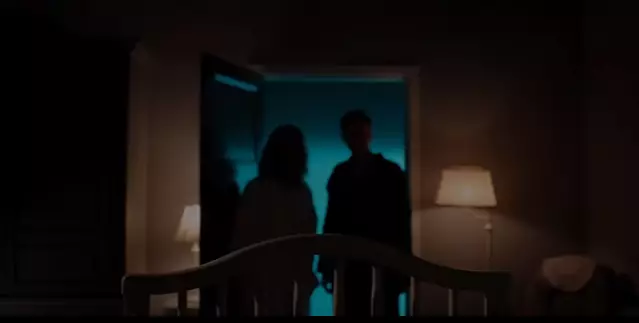
There's been more than a couple of instances in my life where I've woken up feeling like shit. But nothing quite took the biscuit like one morning last summer when I woke up to find myself totally paralysed. Whether I was uber-collected or just still hammered, I'm not sure, because I certainly didn't feel devastated that my chest, arms, waist, balls, thighs, legs and feet had all turned to concrete overnight. I put it all down a dream. Albeit, an evocative one.
Then, out of nowhere, a tall, fairly-built, bouncer-looking male with the palest face and darkened, hollowed out eyes began to slowly approach me from the corner of my room. Clearly hapless, I just lay there, too shocked to even consider some sort of escape. At the moment he seized me in a choke-hold, I managed to shake myself out of it. The man was gone, I woke up, had a coffee and shrugged it off as the most lucid nightmare I'd ever had.

For reference, my 'entity' looked like Captain Black from Captain Scarlet and the Mysterons. Credit: ITV/ITC/Gerry Anderson
Advert
Then a few months later, I saw a mate's status saying he'd experienced similar visions, and that according to one person in the comments, it was 'sleep paralysis'. The state of being unable to move or speak as one transitions from sleeping to wakefulness.
I conducted a few Google searches, watched the odd documentary, and became relatively versed in the phenomenon. I also discovered some other mates who had witnessed an entity in their room. A Greek orthodox colleague of mine once had the hilarious misfortune of seeing the Devil sat on the end of his bed reading the Bible aggressively and holding up pictures of his family. Some see demons, some see ghosts, and some see normal looking humans.

Image credit: The Nightmare/Zipper Bros Films
Advert
What causes this? And what separates it from a conventional dream?
It's actually quite straight-forward. While we're asleep, our bodies go through five 90-minute sleep cycles switching between REM (rapid eye movement, not the band) and NREM (non-rapid eye movement). Approximately 75% of your dozing is spent in the four stages of NREM, which we're better off for (NREM helps you regenerate tissues, build muscle and bone and harden your immune system).
The brain's activity increases during REM sleep, which is when most people experience dreaming. The voluntary muscles become paralysed in response to stop our bodies from acting out our dreams and injuring ourselves or the people around us.
Sleep paralysis happens when people wake up before the REM stage has run its course, leaving the sleeper conscious of where they are but not being able to act on it in any way until REM has finished. Due to the vulnerability of the whole situation, panic usually sets in and people make themselves prone to visionary and auditory hallucinations.
Advert
Here's what can cause it:
Sleeping on your back or in a supine position. It makes you more open to demons assaulting you. Literally.
Insomnia.
Mental conditions like bipolar.
Advert
ADHD medication.
Narcolepsy.
And here's what can suppress it:
Seeking treatment for all of the above.
Advert
But seriously, setting a 'body clock' and improving your general sleeping habits are a sure-fire way to put an end to frequent sleep paralysis episodes.
If that doesn't work then don't hesitate to seek help from a sleep specialist to see if it's linked to other medical conditions.
Words by Josh Teal
Featured image credit: The Nightmare/Zipper Bros Films
Featured Image Credit: